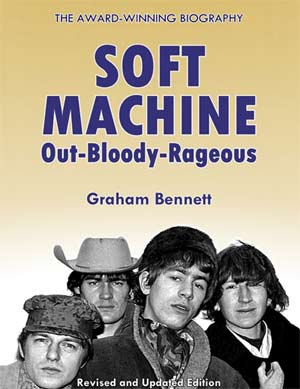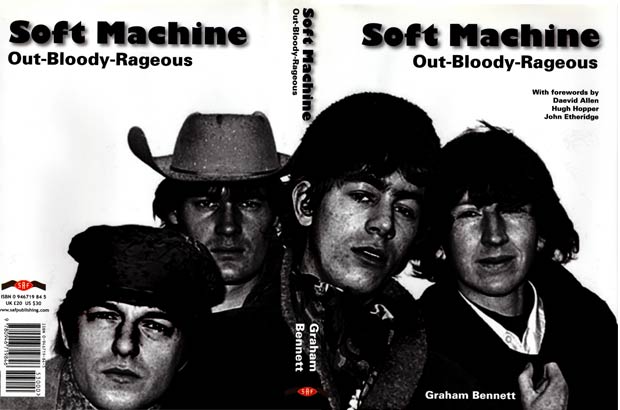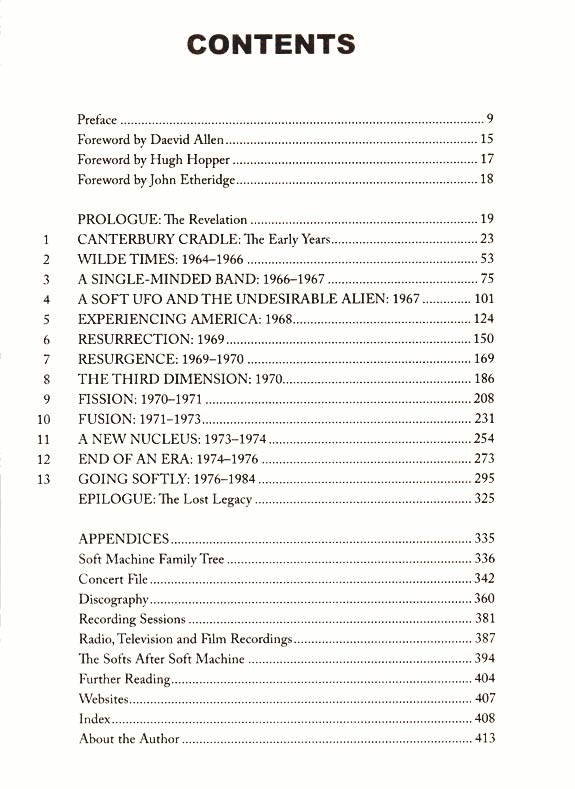|
Une somme, une bible, que dis-je, un traité de plus de 400 pages, 850 grammes.
Publié en 2005 par Graham Bennett aux Editions SAF Publishing (London) - ouvrage culte et épuisé, mais négocié aujourd'hui (août 2014) entre 160 et 235 € sur Amazon,
ce livre mérite qu'on s'y attarde un peu.
Graham Bennett reconstitue l'épopée chronologique d'un groupe qui eut la particularité de n'avoir plus aucun
de ses membres d'origine dès 1976 (Soft Machine 18) et qui a réuni près de 30 musiciens différents au fil de ses
24 recompositions successives !
Dans une langue vivante et précise Graham décrit les multiples circonvolutions de ce collectif pas vraiment mou,
de ses premiers pas - les fameuses early years... au dernier album "Land Of Cokayne" - qui reste pour moi
une énigme - (Soft Machine 23) et jusqu'au dernier concert du 4 août 1984 au Ronnie Scott de Londres (Soft Machine 24).
Complété par plusieurs contributions personnelles (Daevid Allen, Hugh Hopper...), une riche iconographie
et de nombreux appendices (concerts, arbre généalogique de la famille Soft Machine, discographie, recordings sessions, références radio-TV-films, "Que sont-ils devenus?"...),
Out-Bloody-Rageous est bien l'indispensable livre de chevet de tout honnête fan et permet - ce qui n'est pas négligeable et peut même se révéler rentable - de rédiger un nombre
illimité de questions rouges pour le jeu des mille francs.
"Avec quel illustre pianiste Soft Machine partagea-t-il l'affiche du concert du 18 novembre 1969 au Ronnie Scott de Londres ?"
Ding Ding Ding Ding - Ding Dang Dong !
Réponse : Thélonious Monk !
|
|
|
|
|
|
|
 Revised and Updated Edition in 2014 (Kindle edition)
Revised and Updated Edition in 2014 (Kindle edition)
Preface to the Revised Edition
The publication of a revised edition of Soft Machine: Out-Bloody-Rageous provides an opportunity to update some of the information on the band. This is particularly the case for the discography which has benefited from a series of new releases, some of which are of great significance. In addition I have been able to refine parts of the biography and correct a few inaccuracies. In that respect I am grateful to Jon Newey, Jeff Sherman, Nick Loebner, John Trimble, Alan Grange and Vasco Pearce de Azevedo for providing further information that enhanced the narrative.
The Award for Excellence in Historical Recorded Sound Research from the Association for Recorded Sound Collections for Soft Machine: Out-Bloody-Rageous was an unexpected accolade. Although personally satisfying, the real significance of the award is that it shows the professionals at the ARSC recognize the musical importance of Soft Machine’s work. It would be rewarding indeed if the award were to succeed in conveying this message to a broader audience.
On a more melancholy note, it is sad to have to recount that four figures who were central to the Soft Machine story passed away in the period since the biography was first published.
Kevin Ayers was a warm and modest man who took an unyielding sideways stance to music and the world around him. But he was also sharp enough to recognize a one-shot opportunity when it presented itself, as it did on Easter Sunday 1966. Quite simply, without Kevin there would have been no Soft Machine.
Hugh Hopper was one of the most prominent figures in Soft Machine’s history, a musician who remained faithful to his artistic vision. But he was also an exceptionally amiable man, always willing to rack his memory in response to yet another question on an obscure detail from Soft Machine’s history. |
|
|








